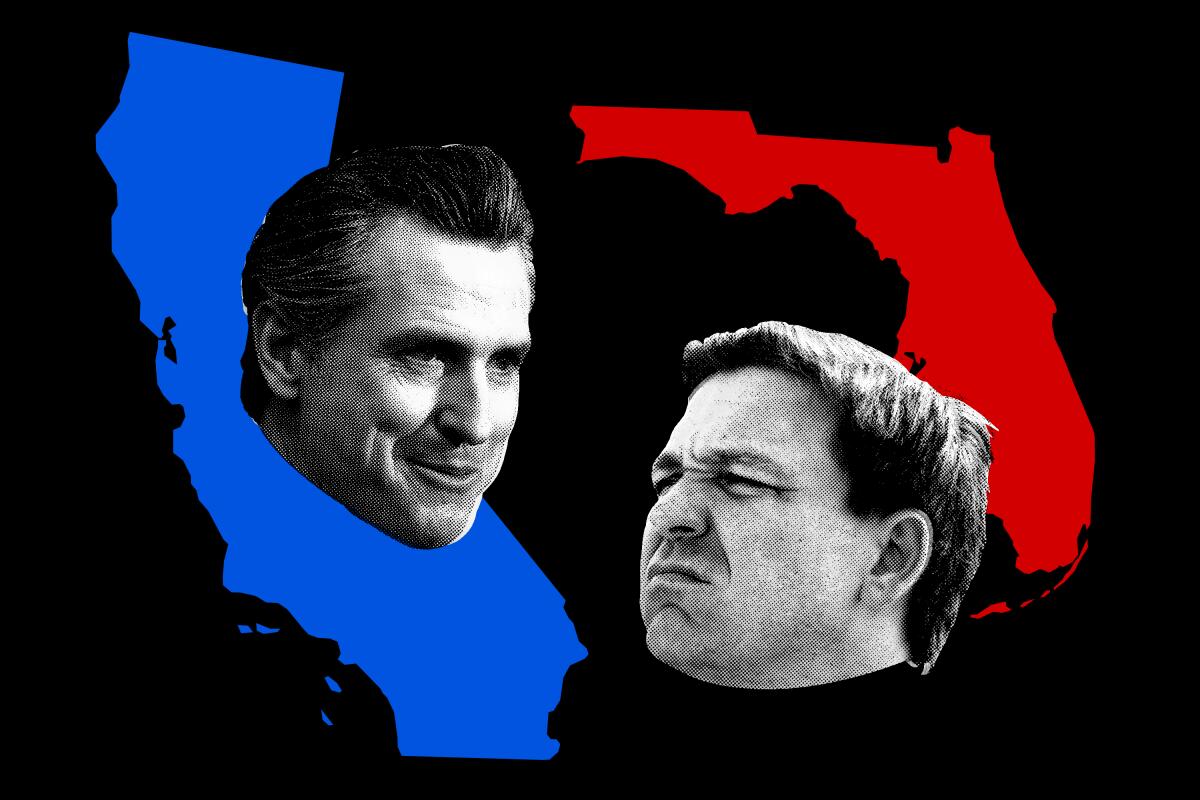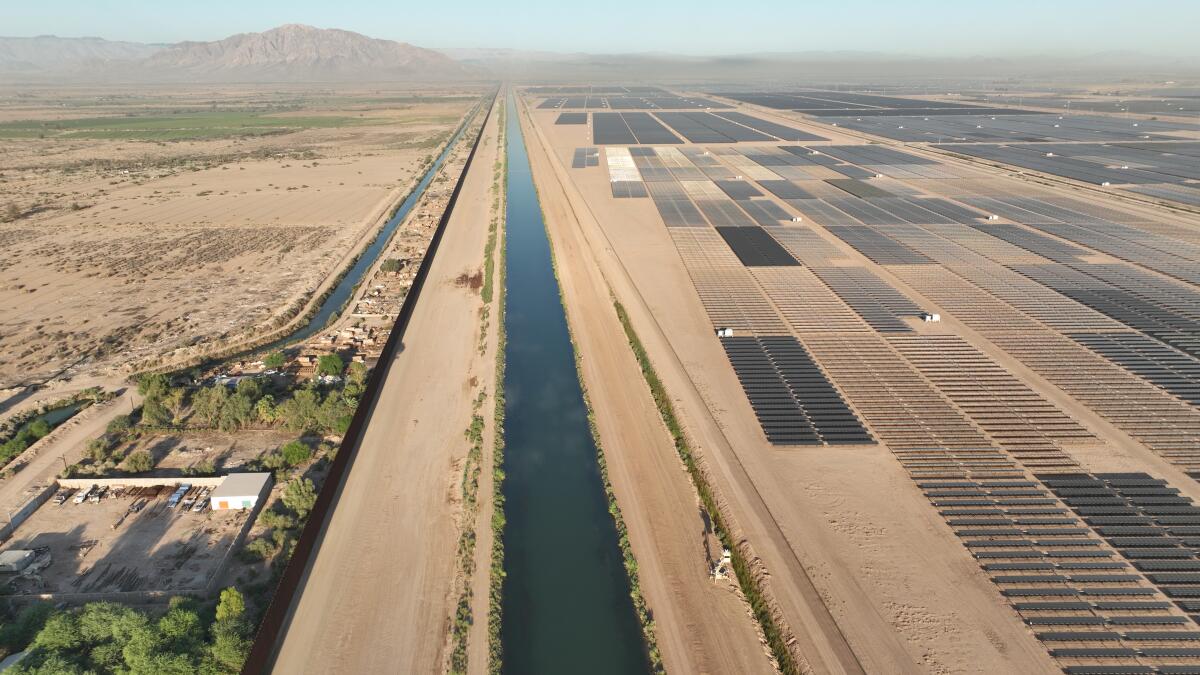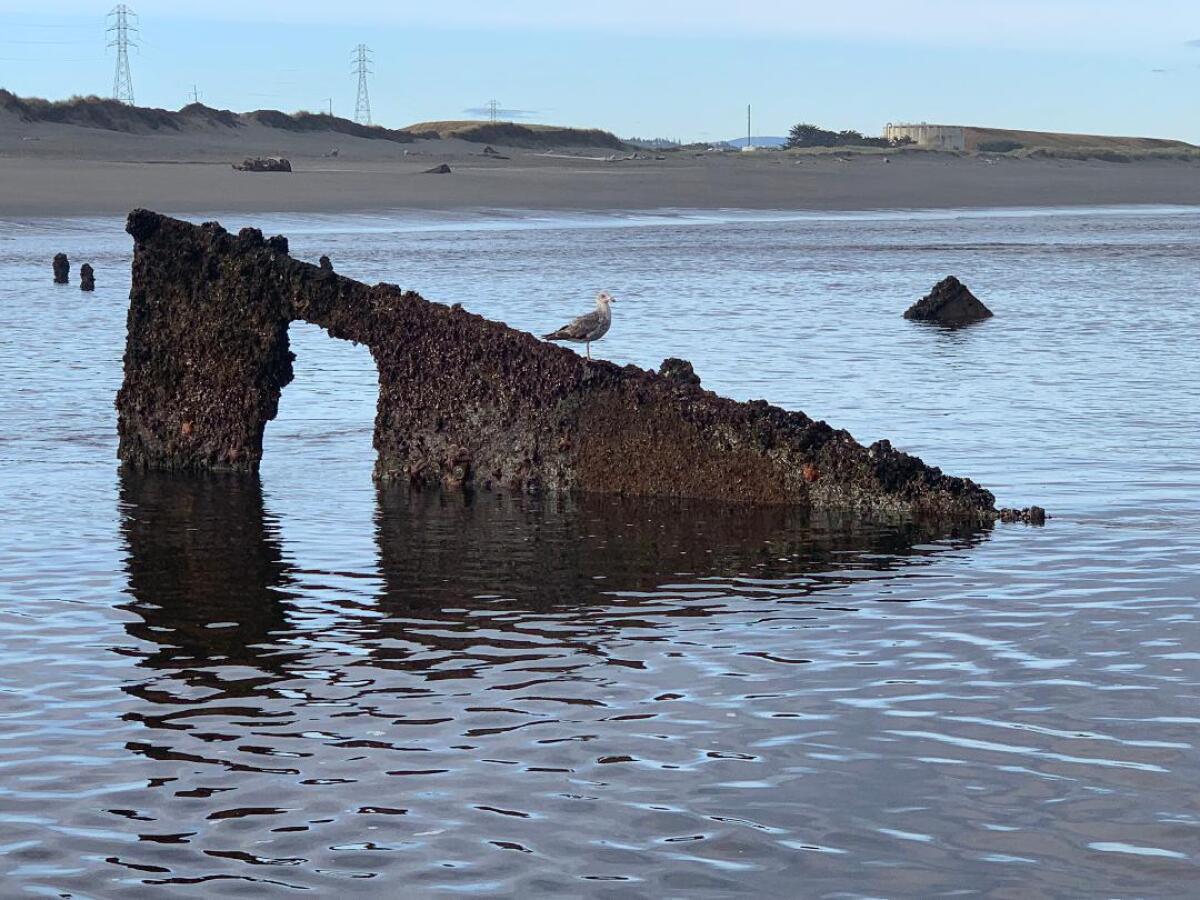How California and Florida became political ‘doppelgangers’ and what their showdown means for residents

Good morning, and welcome to the Essential California newsletter. It’s Wednesday, Jan. 18. I’m Ryan Fonseca.
We might not have to dodge frozen iguanas falling from above, but California does share some commonalities with Florida.
The Golden State and the Sunshine State are both major tourist draws, with warm beaches, blue waters and sprawling acres of Disney IP.
But their differences are now in focus, with state leaders charging into an ideological showdown.
California Gov. Gavin Newsom and Florida Gov. Ron DeSantis have positioned themselves as bannermen for their respective political camps, squaring off on a variety of cultural and political issues like immigration, gun control, public health, protections for LGBTQ people and climate change.
As L.A. Times enterprise reporter Noah Bierman puts it in his latest story:
“Superman has Bizarro, a powerful antagonist who resembles him from afar but has the opposite instincts. Florida and California have each other.”
Noah grew up in Florida and feels there are similarities in the way both states are viewed as places where people can remake their lives, play in the sunshine and enjoy their golden years.
“The fact that they are these kinds of doppelgangers does make it all the more interesting,” he told me. “Some of the same ingredients can make two completely different dishes.”
It wasn’t always this way. Florida was mostly considered a purple state before DeSantis’ massive victory in 2020. And California, you may totally recall, was governed by a certain ripped Republican a couple decades back. Of Newsom’s 10 most recent predecessors, six were GOP members.
Until recently, “there weren’t as many rewards for politicians at the local and state level to be hitting these national issues so hard,” Noah explained, adding:
“There was more local news coverage on local issues, most of which were less partisan. You had politicians wanting to campaign as people who could rise above the political fray.”
So what changed? He pointed to the erosion of local news and the rise of social media, which skewed our perceptions of how national issues affect us compared to local issues.
“We’re at this period now where it is advantageous for governors in both parties to try and treat their states as these model city-states for either the left or the right,” Noah explained. And there’s growing speculation that both men are eyeing presidential runs.
So what does this division mean for Californians — and, more broadly, for Americans?
Noah said that as more states become “ideological fortresses,” they’re shifting away from the polarization and governmental gridlock that’s plaguing national politics.
“This year, we have more than 80% of Americans living in states with governance entirely controlled by one party,” he told me.
That hegemony allows governors and legislatures “to try to create this absolute version of what their party sees as the best way to govern,” he said. “It’s leaving people governed in a more partisan way.”
Over time, that could lead some people to move in search of a state better aligned with their personal values. A poll cited in Noah’s story found that 70% of California Republicans were interested in moving out of the state, compared with just 27% of Democrats. In Florida, 49% of Democrats pondered leaving the state, versus 19% of Republicans.
Narratives like this often make me suspicious. How much of this division is sowed by the political class and amplified by cable news? Are things actually that bleak on the local level? I posed that to Noah, who said he thinks “the loudest voices are the more polarized voices within the country.” He added:
“The thing I love about going out and talking to people ... is you get a much more nuanced picture. Many more people may hold strong views, but they might act pretty civilly toward their neighbors. They may not see the world in the sort of cable-news version that we often do in politics.”
Noah’s subscriber exclusive feature can be read here.
And now, here’s what’s happening across California.
Note: Some of the sites we link to may limit the number of stories you can access without subscribing.
L.A. STORIES
Bundle up, L.A. Freezing conditions are expected for parts of the county this week, prompting a cold weather alert. Health officials are advising residents to dress in warm layers and bring pets inside overnight. Los Angeles Times
L.A. police are widening their investigation into the source of racist City Hall recordings leaked in October. Investigators are focusing on IP addresses linked to several social media accounts in their attempt to identify the source of the recordings, which officials consider to be illegally obtained. Los Angeles Times
Check out "The Times" podcast for essential news and more
These days, waking up to current events can be, well, daunting. If you’re seeking a more balanced news diet, “The Times” podcast is for you. Gustavo Arellano, along with a diverse set of reporters from the award-winning L.A. Times newsroom, delivers the most interesting stories from the Los Angeles Times every Monday, Wednesday and Friday. Listen and subscribe wherever you get your podcasts.
POLITICS AND GOVERNMENT
EBT fraud has thousands of food-stamp and welfare recipients in San Diego County struggling to find food and pay bills. Nearly 5,000 electronic benefit cards have been hacked over the past several months, which officials say is the work of a “sophisticated crime ring.” Public agencies across the state reported similar thefts. San Diego Union-Tribune
University of California graduate student workers who took part in a historic labor strike late last year secured some key benefits, but housing relief wasn’t one of them. Many campuses don’t provide enough housing to meet student demands. That means many are on wait lists for often-scarce on-campus housing, and/or hunting for paycheck-draining apartments near their schools. CalMatters
Five anonymous California gun owners lost their bid to block the release of personal information to academic researchers studying gun violence. Stanford and UC Davis are eligible to access state data about firearm and ammunition purchases through a state bill passed in 2021. The Mercury News
CRIME, COURTS AND POLICING
A recent report on hate crimes in L.A. County is a reminder of when we didn’t even count them. For the majority of the region’s recorded history, there was no official attempt at tallying the now federally classified offenses. “What can be calculated,” Patt Morrison writes, “is how deeply hate offenses were institutionalized — committed by organizations and even by official powers that, in the here and now, are tasked to punish them.” Los Angeles Times
A new state bill would make it illegal for most Californians to buy or possess body armor. Assemblyman Damon Connolly (D-San Rafael) introduced the bill and said in a statement that bulletproof vests have “empowered violent criminals, including mass shooters, to harm, kill and prolong their rampages.” Sacramento Bee
Support our journalism
HEALTH AND THE ENVIRONMENT
One key to solving climate change could be found in the California farm kingdom of the Imperial Valley. Trading crops for solar panels could help solve our region’s dual energy and water crises. But as The Times’ Sammy Roth reports, powerful growers are fighting back. Los Angeles Times

Recent survey data show that nearly half of California’s LGBTQ youth contemplated suicide last year. Mental health experts say the crisis is being made worse by lingering effects of pandemic isolation, along with a hostile political climate. San Francisco Chronicle
A new report identifies major flood risks hidden just feet below parts of the Bay Area. According to the findings, rising ocean water could push less dense groundwater to the surface, causing flooding. Even worse, it could draw out toxic chemicals buried underground. Similar research is underway for vulnerable parts of Southern California. Los Angeles Times
Free online games
Get our free daily crossword puzzle, sudoku, word search and arcade games in our new game center at latimes.com/games.
CALIFORNIA ALMANAC
Los Angeles: sunny, 58. San Diego: mostly sunny, 59. San Francisco: rain, 55. San Jose: partly sunny, then rain, 56. Fresno: dense fog, then partly sunny, 51. Sacramento: mostly cloudy, then showers, 50.
AND FINALLY
Today’s landmark love comes from Barry Evans of Eureka: the remains of the USS Milwaukee on Samoa Beach.

Barry writes:
The Milwaukee had been attempting to refloat the submarine H-3 — which had gone aground in heavy fog — when she got caught herself by the strong tide and beached where she still lies today, 105 years later. You have to wait for a really low tide to catch what’s still visible of the Milwaukee. A few of us history buffs are out there every spring (lowest tides of the year) to pay our respects. She’s sinking a bit more every year and will soon be gone forever.
What are California’s essential landmarks? Fill out this form to send us your photos of a special spot in California — natural or human-made. Tell us why it’s interesting and what makes it a symbol of life in the Golden State. Please be sure to include only photos taken directly by you. Your submission could be featured in a future edition of the newsletter.
Please let us know what we can do to make this newsletter more useful to you. Send comments to [email protected].
Sign up for Essential California
The most important California stories and recommendations in your inbox every morning.
You may occasionally receive promotional content from the Los Angeles Times.




